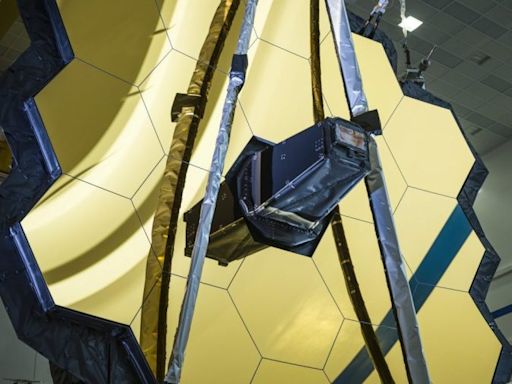Search results
- Located at the centre of the solar system and influencing the motion of all the other bodies through its gravitational force is the Sun, which in itself contains more than 99 percent of the mass of the system. The planets, in order of their distance outward from the Sun, are Mercury, Venus, Earth, Mars, Jupiter, Saturn, Uranus, and Neptune.
www.britannica.com/science/solar-systemSolar system | Definition, Planets, Diagram, Videos, & Facts
People also ask
Which planets are located at the centre of the Solar System?
What are the two main regions of the Solar System?
Which planets are outward from the Sun?
Where is the Sun located in the Solar System?
At the centre is the Sun. Orbiting around the Sun are eight planets with over 100 moons between them, at least five dwarf planets, countless asteroids and the occasional comet. In this Space...
2 days ago · Located at the centre of the solar system and influencing the motion of all the other bodies through its gravitational force is the Sun, which in itself contains more than 99 percent of the mass of the system. The planets, in order of their distance outward from the Sun, are Mercury, Venus, Earth, Mars, Jupiter, Saturn, Uranus, and Neptune ...
- The solar system comprises 8 planets, approximately 170 natural planetary satellites (moons), and countless asteroids, meteorites, and comets.
- There are eight planets in the solar system. The four inner terrestrial planets are Mercury, Venus, Earth, and Mars, all of which consist mainly of...
- The solar system is situated within the Orion-Cygnus Arm of the Milky Way Galaxy. Alpha Centauri, made up of the stars Proxima Centauri, Alpha Cent...
- Scientists have multiple theories that explain how the solar system formed. The favoured theory proposes that the solar system formed from a solar...
- Europa and Enceladus, moons of Jupiter and Saturn respectively, are ice-covered rocky objects that scientists think may harbour life in the water b...
Our solar system is located in the Orion spiral arm of the Milky Way Galaxy and contains eight official planets that orbit counterclockwise around the Sun. The order of the eight official solar system planets from the Sun, starting closest and moving outward is: Mercury; Venus; Earth; Mars; Jupiter; Saturn; Uranus; Neptune
The Nine Planets is an encyclopedic overview with facts and information about mythology and current scientific knowledge of the planets, moons, and other objects in our solar system and beyond.
Mar 29, 2024 · Our solar system has eight planets, and five officially recognized dwarf planets. Which planet is biggest? Which is smallest? What is the order of the planets as we move out from the Sun?
Over 99.86% of the Solar System's mass is in the Sun and nearly 90% of the remaining mass is in Jupiter and Saturn. There is a strong consensus among astronomers[e]that the Solar System has at least nine dwarf planets: Ceres, Orcus, Pluto, Haumea, Quaoar, Makemake, Gonggong, Eris, and Sedna.
Mar 29, 2023 · The order of the planets in the solar system, starting nearest the sun and working outward is the following: Mercury, Venus, Earth, Mars, Jupiter, Saturn, Uranus, Neptune and then...

